︎ Curaturae, 2022
Curaturae (link) is a website to help generate ideas by connecting your writing to over three million objects from the Smithsonian’s Open Access collection. Write in up to ten different languages (including Japanese, French, and Russian) and wait for the application to respond with images in near real-time. The resulting collage of images is displayed at scale, as if hung in a real museum gallery. Click on a highlighted word to reveal the matching image. Tap on the image to learn more about it. After exploring these matches, save your findings as a PDF. Whether writing in poetry, prose, or text messages, Curaturae brings the spirit of the museum to you, at home on your computer or at the bus stop on your smartphone.
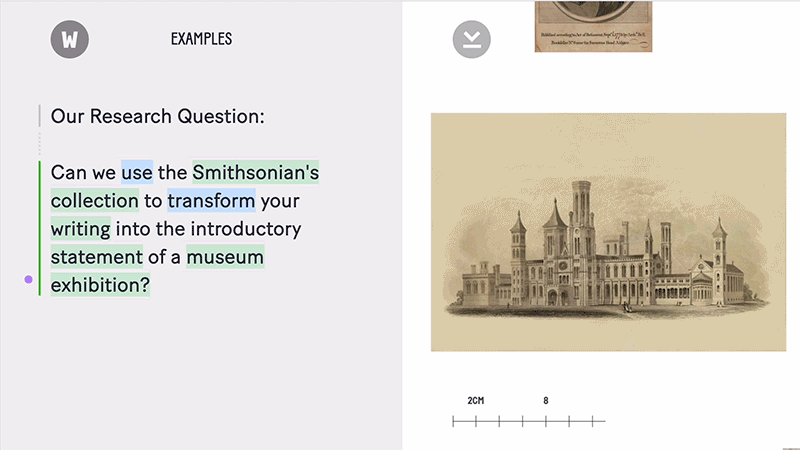
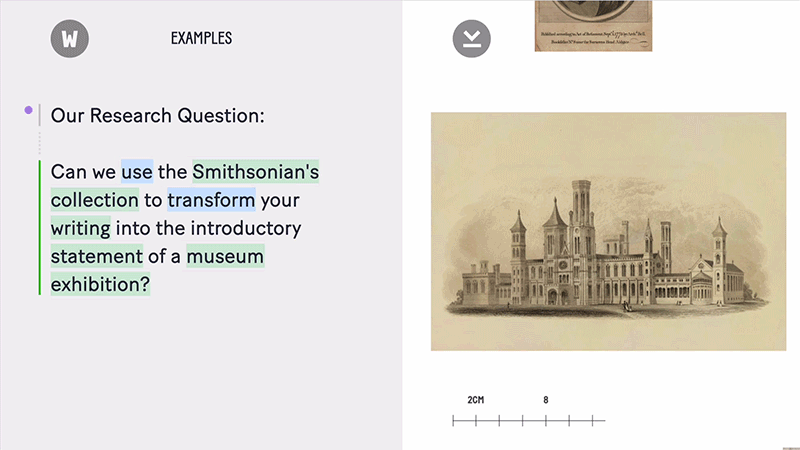




Examples of Curaturae’s unique design features.
Curaturae ties state of the art language syntax and translation technologies to recently digitized, opened, and searchable art objects in a unique user interface inspired by the experience of visiting a museum. Writers of all ages and experience levels have a new tool to not only explore and learn about art, but a tool to work through writer’s block and grant a new perspective on their writing.
This project’s effort was realized through the Activating Smithsonian’s Open Access grant from Cooper Hewitt Design Museum and Verizon 5G Labs. Research for this project was conducted at NEW INC, the New Museum’s art, design, and technology incubator, on their Cultural Futures track with support from the Knight Foundation.
The Life of a Keyword, 2022
After its reception, it became clear that the project is a lightning rod for questions surrounding different types of bias: curatorial, technological, and creative biases. So, I created a case study to explain, “How writing with Open Access works”. On the page, I walk through the journey of how writing transforms into imagery. For each step along the way, I take time to answer questions that might arise. To the right are a set of animations I created to help explain this process. Because I rely on institutional information and technological features, the page has additional questions associated with more information to learn more or to reach the team behind a specific feature.
︎ Living Encyclopedia, 2025
Living Encyclopedia (link) is the world’s first Artificial Intelligence (AI) system dedicated to nature. It “is reimagining the traditional concept of an encyclopedia by transforming static knowledge into an evolving, multi-sensory experience powered by AI, where nature's beauty and complexity are brought to life through dynamic visuals, sound, and interaction.”1 With three modes: Research, Create, and Dream, subscribers can explore the natural world or reimagine it.
Sample output from Create Mode, 2025
Research
Discuss topics of flora, fauna, and fungi • explore the model’s latent space • monitor processes and its climate impact
Create
Generate images and depth maps in high-resolution • keep a history of all your creations • save and distribute outputs
Dream
Lean back to a meditative walk through the latent space of the model • see and hear nature in a never-ending landscape
Living Encyclopedia is a paid for service that allows subscribers to access and explore the AI model, dubbed the Large Nature Model (link), that Refik Anadol Studios has developed over the last 10 years. Among its significance as a model built by artists and focused on data from the natural world, it is also a foundational source material for the artwork to be shown at Dataland’s inaugural exhibitions. Dataland is opening this year, 2025, across the street from the Walt Disney Concert Hall in downtown Los Angeles.
I have written even more about the process of developing the Living Encyclopedia in my monthly newsletter (link). Dataland has also written extensively about it as well (link). A nice review of the project can be found on artnet (link) written by Adam Schrader.
1.
Dataland: About Living Encyclopedia. Dataland, 2025. https://dataland.art/about/living-encyclopedia/
︎ EZPZ, 2023
EZPZ (link) is an iOS app where the act of doodling makes tiny animations and sounds. Backed by sophisticated effects and sequencing, simple gestures with the flick of a finger come together to make techno melodies and beats. Choose from 15 generative brushes accompanied by hifi samples imagined, selected, and engineered by the acclaimed music producer Cari Lekebusch. These vibrant and reactive sounds are literally at your fingertips. With EZPZ music making has never been more fun. Let your fingers doodle to relax, play, or make your next masterpiece. EZPZ puts a unique synesthetic experience in your pocket.
Stockholm, Sweden • 15 Generative Brushes • Body • Soul • Minds • Vessels • Space • Warp • Shell • Eyes • Ghost • Arise • Fallen • Planes • Cloud • Rays • Shade
This app is powered by a custom audio-visual engine developed at Chroma Studios. The team, composed of members in Stockholm, Helsinki, and Los Angeles, have been quietly working since 2021 to harness technology in order to redefine audio entertainment. For more on them and their other apps follow Chroma on Instagram.
To commemorate the launch I minted 5 NFTs which you can view or collect on Foundation. See the collection. The app is free to download, use, and publish your own derivative works.
To commemorate the launch I minted 5 NFTs which you can view or collect on Foundation. See the collection. The app is free to download, use, and publish your own derivative works.
There is a wealth of information in our world today. This surplus is thanks to the everyday technology we use to enrich our lives. With a few taps on your smartphone or clicks on your computer keyboard, we are presented scientific advancements, athletic milestones, political developments, and dinner recipes, instantaneously, and from multiple sources around the world. In one sense, technology collapses time and space in order to deliver information to us. But, what purpose does this serve exactly? I am interested in using this abundance of information as a medium to depict the human experience and the systems that implicitly guide that experience.
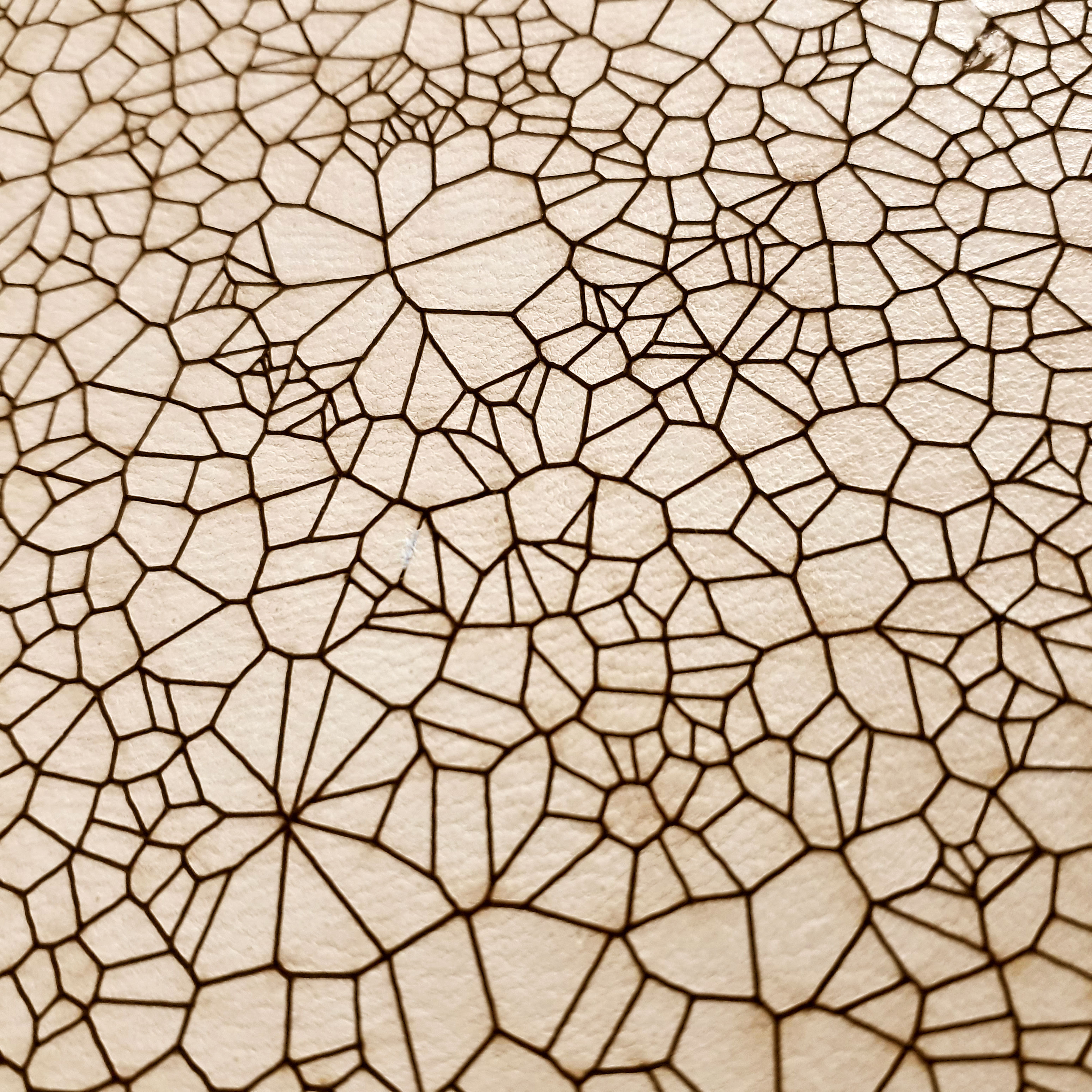


Laser engraved cover visualizing word occurrences in The Satyricon
︎ Lost Treasures Found, 2019
After a career in the coliseum Encolpius works toward an academic degree. Outside of class he yearns for the affection of his boyfriend Giton, the validation of his professor Agamemnon, and the collapse of his once friend and now arch rival Ascyltus. Encolpius, however, is time and again met with failure. His endeavors unravel throughout The Satyricon, written by Petronius in the late first century, in the most bizarre and hilarious ways. Traces of Encolpius’ trials can be seen today in the incredulous stories shared over social media. The reception of these stories, like the original reception of The Satyricon by Ancient Romans, are met with widespread amusement and engagement. This signals the timeless qualities of human emotions in society.
Today, however, digital culture occupies our focus and pushes Encolpius into the shadows. We are not building off our predecessors so much as we are obscuring them. In an attempt to reverse this tendency, Lost Treasures Found offers contemporary access to the story of Encolpius. It presents The Satyricon unabridged and in its original Latin. It replaces key Latin words with their contemporary Emoji counterparts through a custom transcode function. With no prior understanding of Latin, dive into the text and catch glimpses of daily life, from thousands of years ago. The Latin literate are presented with a familiar story set against an unexpected, but appropriate modern backdrop. Ultimately, this book collapses two-thousand years of progress and exposes two distant cultures to each other.




Top to bottom, left to right: front page, chapter spreads, and close up
Paris, France • 166 Pages • Canson Paper • Acid Free • 200gm • 148 × 210mm • Paperback • Perfect Bound • Mrs. Eaves • Apple Color Emoji



René Magritte, Les Idées Claires, 1955. Jean Baldessari, Pure Beauty, 1968. Jean-Michel Alberola, Little Utopian House, 2002.
︎ des Objets Reconnus, 2019
Transcoding is a technological phenomenon which can be used to connect different cultural subjects. This case is explored in Lost Treasures Found where Latin and Emojis become an unlikely match. On the other hand, artists like René Magritte, John Baldessari, and Jean-Michel Alberola connect subjects via visual juxtaposition. Through juxtaposition, Magritte compares clouds to boulders. Baldessari examines type’s relationship to color. And, Alberola superimposes fragments of figure and lyric to make whole forms. Through juxtaposition, these artists are able to reframe, question, and better understand their subject matter. Des Objets Reconnus takes this spirit of juxtaposition and combines it with the power of transcoding.
des Objets Reconnus, 1 hour limited edition video loop, Sedition Art, London, United Kingdom.
On the right side, hundreds of famous oil paintings cycle in and out. On the left are keywords perceived by an object recognition algorithm used by many of the top technology corporations in the world. As the keywords change, the computer distorts the oil painting to reveal the part of the painting that triggers hidden metadata. The methodical pace runs at one half of one percent the speed the computer takes to recognize objects in an image. This expanded view frames the computational process in terms conducive to human perception. In addition, the wispy motion of the paintings is directly tied to how uncertain the algorithm is. Lastly, a sonic layer matches predominant colors present in the painting to underscore the pace. Des Objets Reconnus transcodes oil paintings through object recognition in order to juxtapose representation and meaning. In this way, des Objets Reconnus questions our personal relationships with paintings to better understand this pervasive algorithm.




Identified keyword recognition of a portrait and a landscape for comparison.

Event poster for Nuit Blanche
︎ Harm to Ongoing Matter, 2020
Transcoding is expressive through its rigidity. In Lost Treasures Found and des Objets Reconnus transcoding made it possible to ingest and standardize many discrete assets, words and paintings respectively, to frame juxtaposition. Where transcoding is rigid, juxtaposition is loose. It is an artistic gesture to promote expression. For instance, Lost Treasures Found compares languages from different eras and des Objets Reconnus analyzes representation and meaning. So, one strength of new media enables the commingling of rigid and loose approaches to expression. Harm to Ongoing Matter pushes this dynamic further.
On Saturday October 5, 2019, Brandel alongside electronic musician Christina Chatfield took the stage to perform for La Gaîté Lyrique’s Nuit Blanche programming. During the two-hour set, thousands of people danced to acid rhythms and saw a retelling of Robert Mueller III’s “Report on the Investigation into Russian Interference in the 2016 Presidential Election”. Throughout the infamous document, there are words, lines, and paragraphs which are redacted, blacked out. These redactions carry the label, “Harm to Ongoing Matter”. This recontextualization is made possible through transcoding. The juxtaposition of media, a political report and a concert, adds a new and contradictory layer to this still developing narrative. Contradiction, as media theorist Geoff Cox puts it, is “where politics is evident and where re-invention takes place.”
Early prototype converting words from the Mueller Report into chord progressions. Click on the video to toggle the audio on and off.
Early prototype rehearsing word playback to music with Seaboard Block.
Harm to Ongoing Matter, limited edition 4 minute video loop, Sedition Art, London, United Kingdom.
In this limited edition video loop, the documentation from the Nuit Blanche performance is superimposed onto the report. All artist proceeds from this piece will be donated to Gray Area, the San Francisco project space where the works were originally conceived to be shown prior to COVID-19. A talk on this work and others from The Transcode Process is available on Patch by Gray Area alongside the exhibition opening on Sedition starting July 2, 2020.
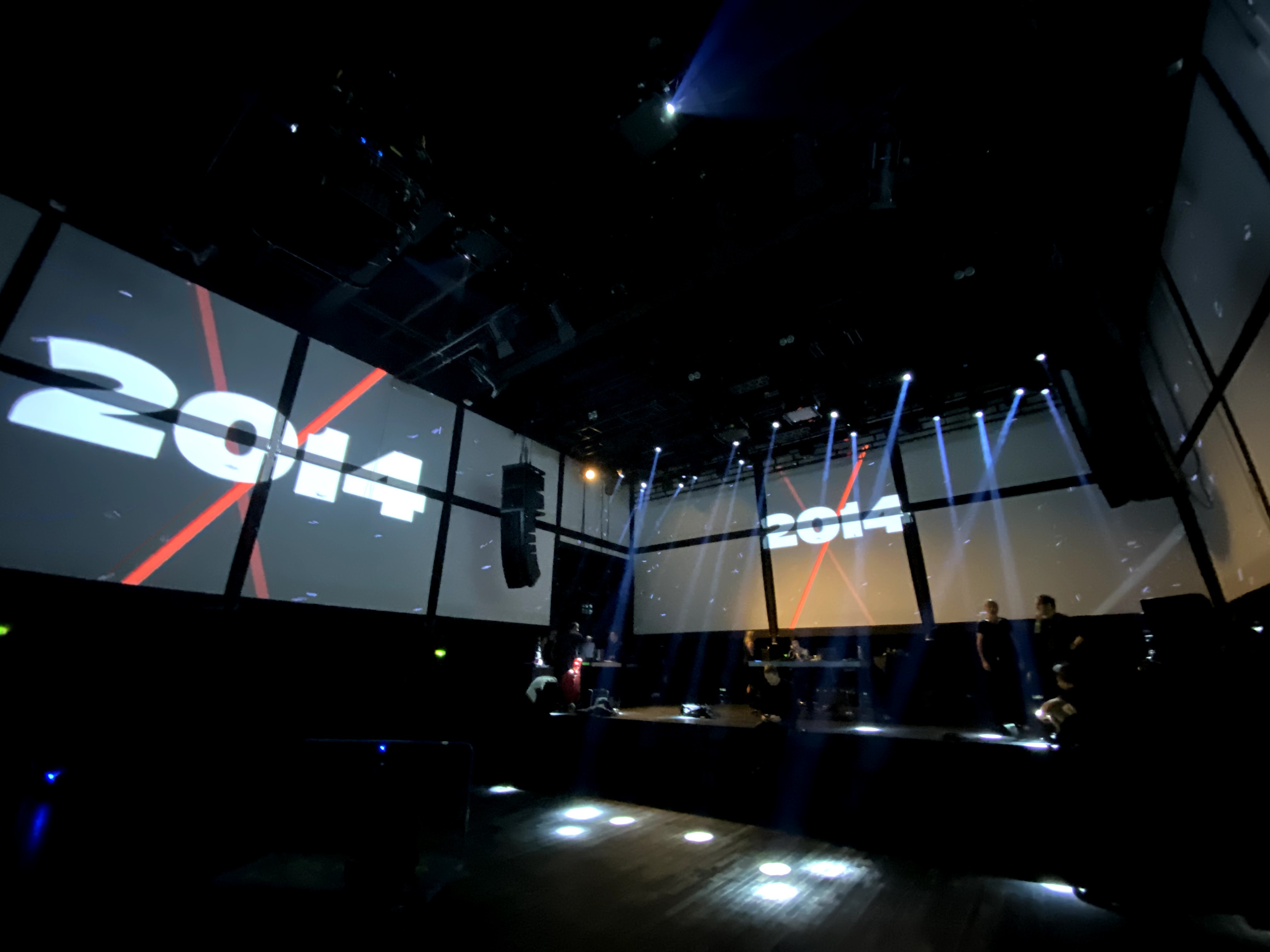




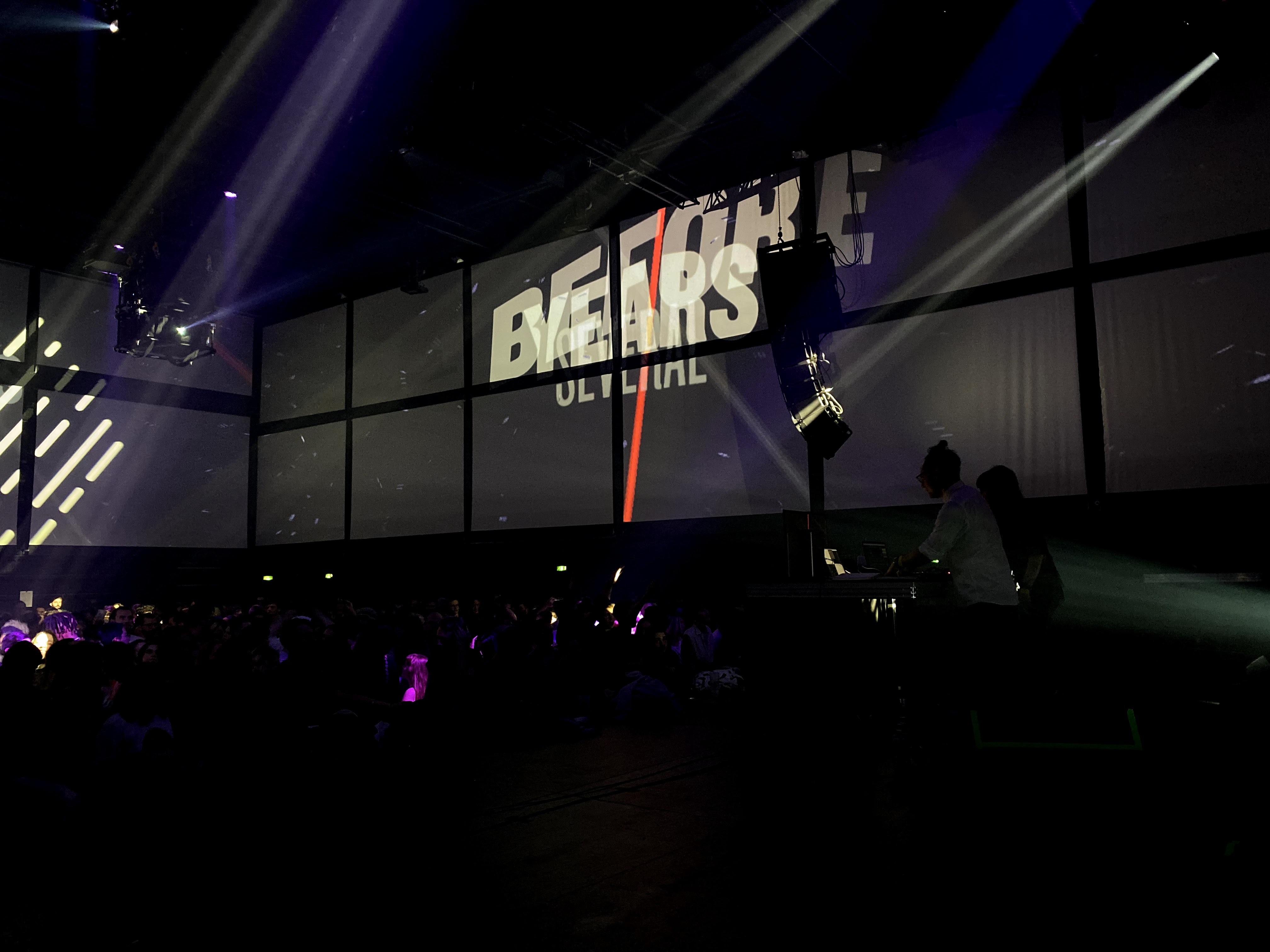



Photos from the event by Chris Delbuck.
Software as Artwork (English) #1/25. Token 26. Minted 09/15/22.
Click video to toggle sound.
Click video to toggle sound.
Software as Artwork, also known as SAAW tokens (or SaAw) on the Ethereum blockchain, is a collection of NFTs that represent a manifesto to bring artistic practices to contemporary software development.
The video, available in English and French, explains Software as Artwork using emerging text-to-speech, speech-to-text technologies, and custom software for graphics all while satirizing the state of end-user technology consumption.
The video, available in English and French, explains Software as Artwork using emerging text-to-speech, speech-to-text technologies, and custom software for graphics all while satirizing the state of end-user technology consumption.
 For more details see: Software as Artwork’s press release on Mirror.xyz, SaAw collection on OpenSea, and the SAAW smart contract on Etherscan.
For more details see: Software as Artwork’s press release on Mirror.xyz, SaAw collection on OpenSea, and the SAAW smart contract on Etherscan.
Technology allows us to interact with each other in new ways. Collaboration and creative development are not exempt from this phenomenon. My artistic process coupled with the ability to realize complex technical systems offers a unique, personal, and most importantly human perspective on digital art. This point of view enables artistic collaboration and distinguishes brands from traditional digital experiences. Below is a sampling of different types of commercial collaborations from audio-visual instruments to interactive installations.
Click and drag to change your camera’s position.
Every teal UI object controls the experience in a different way.
Every teal UI object controls the experience in a different way.
︎ What You Don’t Know, 2019
Dive into the creative process of avant-pop artist Matthew Dear from his new single of the same name. Floating above you is a magic eight-ball beaming lyrics. In the distance planetary objects orbit around you to the beat. And directly ahead is an elastic wave which bounces, bulges, and twists to the complex melodies. This multi-layered visualization allows you to pivot along eight unique instruments, manipulate the speed of each one, and scratch as if you were standing on a giant turntable. The result is a music video that asks what you know about music creation. Whether through VR, mobile, or desktop, this WebVR experience offers a new way to appreciate the craft of music. Distributed under the partnership of WITHIN and Ghostly International and freely available on the web.






Stills from the experience
︎ The Doomsday Invention, 2015
The Doomsday Invention (link) is the title of an in-depth New Yorker article written by Raffi Katchadourian. In it, he explores the ethics and futures of artificial intelligence primarily through the thoughts, events, and circumstances surrounding Oxford philosopher Nick Bostrom. Working with Brooklyn-based studio Hunter Gatherer (link) and the New Yorker art direction team, we realized the publication’s first interactive illustration. This gave added weight to the article’s cover spreads on both the publication’s website and mobile applications, while simultaneously staying consistent with printed material.
The direction stems from the concept of cumulative computer functions or routines. Each routine individually is rather simplistic, hence the geometric foundation. However, when combined and automated there are radically large combinations that yield unique but cohesive elements. The earthen color palette furthers the mundane nature of these routines. As society enlists more use cases of artificial intelligence, its currently mysterious movements will emerge as perceivable intent.
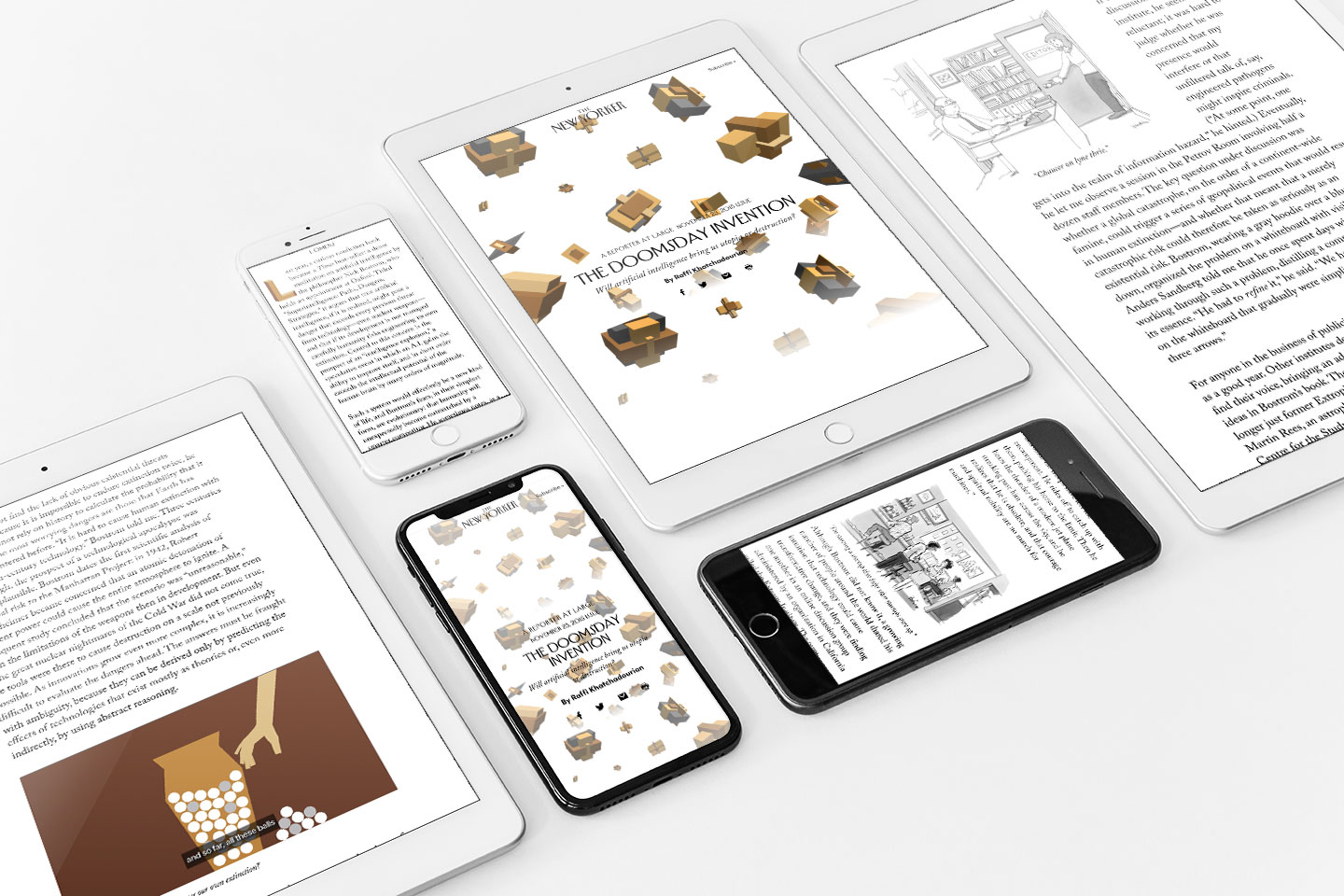
Mockup of article on different devices and screen sizes
![]() Early prototype exploring parametric qualities of artificial intelligence routines
Early prototype exploring parametric qualities of artificial intelligence routines
︎ Unnumbered Sparks, 2014
Unnumbered Sparks is a monumental interactive sculpture in the sky. Choreographed by visitors in real time through their mobile devices, at night the sculpture became a crowd-controlled visual artwork on a giant, floating canvas to celebrate TED’s 30th anniversary.
The sculpture spanned 745 feet between buildings in downtown Vancouver, Canada for one week in March, 2014. After sunset the sculpture came alive with illumination. Visitors with smartphones and tablets were able to paint vibrant beams of light across the sculpture at a remarkable scale: small movements on their phones became hundred foot long trails evolving and combining with fellow participants. As part of Google’s Data Arts Team, I developed, designed, and architected the visuals that visitors created on the sculpture.

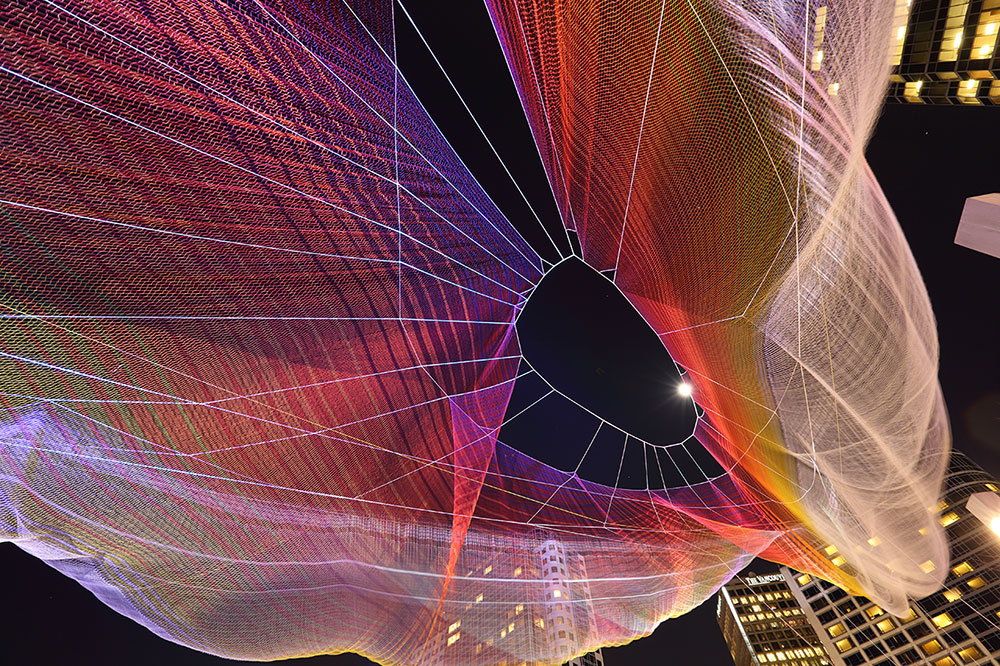

Photographs of the installation by Ema Peter







︎ Mellow Waves, 2017
Mellow Waves is the studio album from the band Cornelius. For me it is a varying ride of pensive thought and staccato emotions. There are many familiar hooks and textures where collegiate nostalgia surfaces. In other moments I am caught with unsettling feelings about what is and what might happen — both musically and emotionally. Despite these salient qualities nothing defines Cornelius more than Keigo’s voice. This goes beyond just the sonic qualities of the music he produces. The visual accompaniment for Cornelius’ music videos, album art, and stage performances reinforce the thoughts and feelings as much as songs. When Rostrum Records reached out to chat about collaborating for the American release of a special vinyl press for Mellow Waves, we came up with a special website where you can play custom sound clips from the album alongside his concert visuals.
Mellow Waves, real-time audio/visual instrument available on the web
︎ Waiting for Stakes, 2021
2021 is the year of the Ox, but apparently it is also the year that cryptoart makes its mainstream debut. During this frenzy, discussion of cryptoart primarily concerns non-fungible tokens (NFT). In describing this technology, many attribute provenance as the primary benefit of NFTs.1 In short, it is the idea that any party can dispute and prove that the characteristics of one piece of digital media predates another of the same contents. It also describes who its true author is. While this is certainly a compelling and novel benefit bestowed to digital media, the idea of provenance stems from a more basic advantage that catches my attention as an artist trying to understand the NFT: permanence.
Since I started using computers, there continues to be an unspoken agreement. Digital media is ephemeral. Drag it to the trashcan and it disappears. Go to a website after a few years, it likely does not exist anymore. Large communities, like myspace for instance, disappear, sometimes reboot, but never stay the way they are. Why buy into a system like this? Because this is the trade off for having something at your fingertips, replicated and reduplicated, on multiple devices, in multiple servers all around the world. I believed it to be a decent deal. I moved away from digital illustration, a passion I had as a teenager, into graphic design and computer programming, because they do not rely on a single output like an image. They are systems that generate many outputs, moving images, and responses to interactions to name a few. My methodologies reinforce the idea that digital media is ephemeral. So, to learn that digital media can be permanent is incredibly disruptive to my worldview. It is also attractive. On top of this, like a plot twist in a drama, the trade off for permanence with NFTs is scarcity. For a digital artist, this turns their world upside down.
Since I started using computers, there continues to be an unspoken agreement. Digital media is ephemeral. Drag it to the trashcan and it disappears. Go to a website after a few years, it likely does not exist anymore. Large communities, like myspace for instance, disappear, sometimes reboot, but never stay the way they are. Why buy into a system like this? Because this is the trade off for having something at your fingertips, replicated and reduplicated, on multiple devices, in multiple servers all around the world. I believed it to be a decent deal. I moved away from digital illustration, a passion I had as a teenager, into graphic design and computer programming, because they do not rely on a single output like an image. They are systems that generate many outputs, moving images, and responses to interactions to name a few. My methodologies reinforce the idea that digital media is ephemeral. So, to learn that digital media can be permanent is incredibly disruptive to my worldview. It is also attractive. On top of this, like a plot twist in a drama, the trade off for permanence with NFTs is scarcity. For a digital artist, this turns their world upside down.
In this new world, I’m searching for my footing. As with many artists, my way of understanding is through the process of making. At this early stage, I have few takeaways. What I do have is an intention:
In the spirit of permanence, do not feel the need to rush. Be open to changing your mind and your process based on new findings and understanding.
In the spirit of permanence, do not feel the need to rush. Be open to changing your mind and your process based on new findings and understanding.
My (In Progress) Working Model
The scarcity imbued to an NFT has a realworld price: energy.2 Pipkin damns NFTs in part due to their cost of emissions. During my time working at Google, I learned that, like the critique of cryptocurrencies and their markets, Google measures its output in kilowatts. Since NFT energy cost is so high, it demands scarcity from the artist minting work. For Pipkin, that scarcity means abstaining from the technology altogether. For me, this is a question of habit. The dream of permanence is too elusive to walk away from. If NFTs have such a high realworld energy cost, then what expression of mine is worth that cost? Further, what digital files have I made that are worth immortalizing? Lastly, if permanence is the main concern, then selling a minted piece becomes secondary.
In parallel to this critique, the community rallying around NFTs is a community that studies form. My favorite pieces I have seen on various platforms have a purity to them.3 Where Trehan’s Ecotherapy lacks concept it makes up in process. This is partly due to the platform description character limit and partly due to the difficulty in navigating applications and meta-systems to create an emotionally charged image. This simplicity reminds me of when I was learning how to use systems to generate images that resonated with me. The pursuit of new techniques and constant personal betterment continues to be central for anyone working in the creative economy. For me, the visual qualities of music are the forms that bring me to that beginner’s mindset.
Visual Music: Mallow I
Audio: Mallow by Curling
Format: 1024x1024
Length: 720 Frames
Frames per second: 60
Bitrate: 16Mbps
Written entirely in JavaScript
Made during two live streams over the course of 9 hours.
1. Code Improvisation (link)
2. Visual Refinement (link)
Audio: Mallow by Curling
Format: 1024x1024
Length: 720 Frames
Frames per second: 60
Bitrate: 16Mbps
Written entirely in JavaScript
Made during two live streams over the course of 9 hours.
1. Code Improvisation (link)
2. Visual Refinement (link)
Still Life Study 1
Format: 1024x1024
Length: 945 Frames
Frames per second: 30
Written entirely in JavaScript with Two.js
Format: 1024x1024
Length: 945 Frames
Frames per second: 30
Written entirely in JavaScript with Two.js
- Horne, Jacob. “What is Cryptomedia?”
- Pipkin, Everest. “But the Environmental Issues with Cryptoart”
- Trehan, Khyati. Ecotherapy